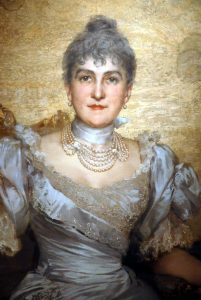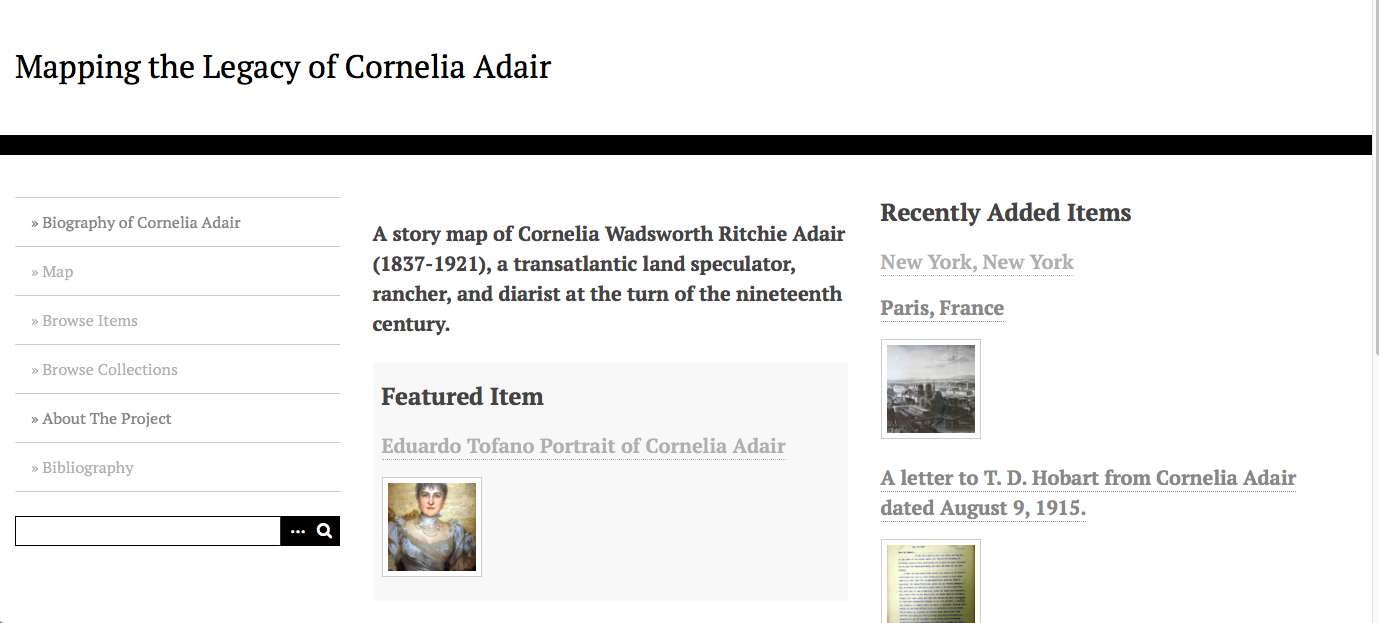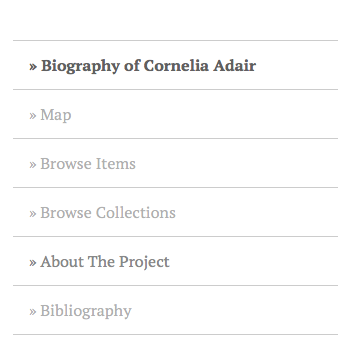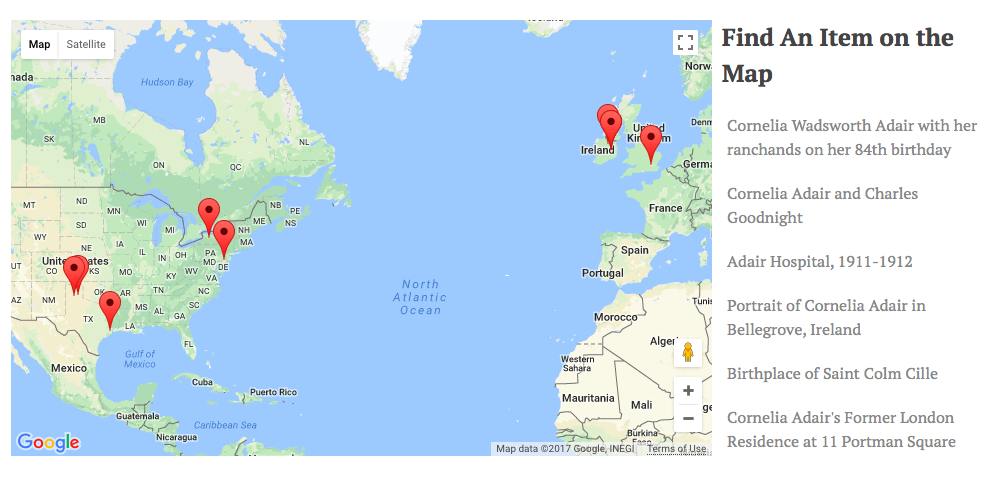My project aims to create a digital biography/storymap of Cornelia Wadsworth Ritchie Adair (1837-1921), a pioneer originally from Geneseo, New York who played a substantial role in land development in Donegal, Ireland, and Southwest Texas. After her marriage to notorious Irish landowner John George Adair, Cornelia managed their estate at Glenveagh and was the primary manager of the JA Ranch in Texas, which at its height consisted of 500,000 acres primarily used for cattle grazing. Following the 1916 Easter Rising, Cornelia fled Glenveagh and devoted her time to land expansion in Texas.

Considerable primary and secondary source material exists on Cornelia Adair because her life intersected with many developing narratives of the late 19th century–including Irish land wars, the Easter Rising, Native American land relations, early environmentalist practices and Republican philanthropy. However, I wanted to organize and compile these sources into one website that focuses a narrative on Cornelia Adair, with a particular focus on the way Adair transformed spaces with an eye towards community development. As such, I decided to organize available primary documents and existing research on the Adairs into a biographical story map, which provides a spatial lens for assessing Cornelia Adair’s extensive travels and proto-environmentalist land practices.

Before beginning the digital map, though, I had to develop a homepage and subsequent pages that would contextualize Adair and provide users with a fuller description of her biographical legacy. I used Omeka, an open-source digital archivist platform, to create “items” related to Adair, most of which contained a picture, source/publishing rights information, and several sentences of description to explain how that particular item connects to Adair’s larger narrative story. I also added three simple pages to the navigator of my site: a biography page, in which I provided a short (~750 word) biography of Adair; a bibliography to aggregate my sources and provide users with further reading material; and an “about the project page.” In this last page, I state the goals of my website, its origins in my research grant from the Geneseo Foundation, the digital platforms I used to make the site, and an acknowledgement to the folks who helped me in my research (including Dr. Schacht, Dr. Anne, Warren Stricker, and Sean O’Gaoithin). I also organized my items into collections, so users can quickly browse collections such as “pictures of Cornelia Adair” or “letters from Cornelia Adair” without combing through the map.

Finally, after adding the appropriate biographical and contextual information onto the site, I began developing my original aim for the project: a digital storymap. I used the Omeka plugin Geolocation to locate each of my items to a specific point on a map. From there, I was able to create a more holistic, spatial representation of the scope of Cornelia Adair’s travel and activities. Users can browse the map to find items, or zoom in to read about the legacy of Cornelia Adair at a particular place.

This is just one example of many forms of storymaps (I wrote about an earlier one that examines Yeats’s legacy created by the National Library of Ireland), but in general, I feel that my project helps build onto Cornelia Adair’s biography by showing how her activity connects to particular spaces. For visual and spatial learners, maps are often a critical way to transmit stories, which is what I sought out to accomplish in this project. However, the “about” section and “browse items/collections” feature of my website allows users who learn textually to explore the same content outside the confines of a map.
There are still many directions for me to expand upon my website on Cornelia Adair. For one thing, I’d like to incorporate photographs I’ve seen of Ireland’s land surveys of Glenveagh castle from before and after Cornelia’s time there, because these maps illuminate how Cornelia built and transformed a physical place, one that now operates as a national park in Donegal. I also want to add an audio recording of an interview I conducted with Sean O’Gaoithin, the head gardener of Glenveagh National Park (Sean has researched Cornelia’s influence extensively). For now, though, I’m happy with the outcome of my project, and satisfied with the ways Omeka and Geolocation enabled me to visually tell a story that compiles a wide range of resources from various locations. The tool (or really, set of tools) is an excellent platform to expand upon the traditional practice of archiving and categorizing historical information to convey broader narratives.

hello – very pleased to see the focus on Cornelia Adair as I have done quite a bit of research on her notorious husband, John George Adair. I note also that there is to be a talk in April on the topic at the Livingston County Museum. I did send some of details of my own findings in an email to Prof Cope but not sure if he saw it or if it got put into the spam filter. Anyway delighted to hear of this work and hoping to learn from it; I assume you are aware too that Cornelia seems to have made all the way to China on one occasion – a truly global figure!
Hello! Thanks for your kind message, Raymond. As part of my project, I traveled to Donegal last summer and met with archivists from the Donegal County Council in Lifford, who were extremely forthcoming in helping me with my research. It’s always nice to communicate with people on overlapping research projects (and you’re right–Cornelia Adair lived a very fascinating life!) I took note of your contact information and would love to stay in touch as my project develops. All best, Veronica Taglia